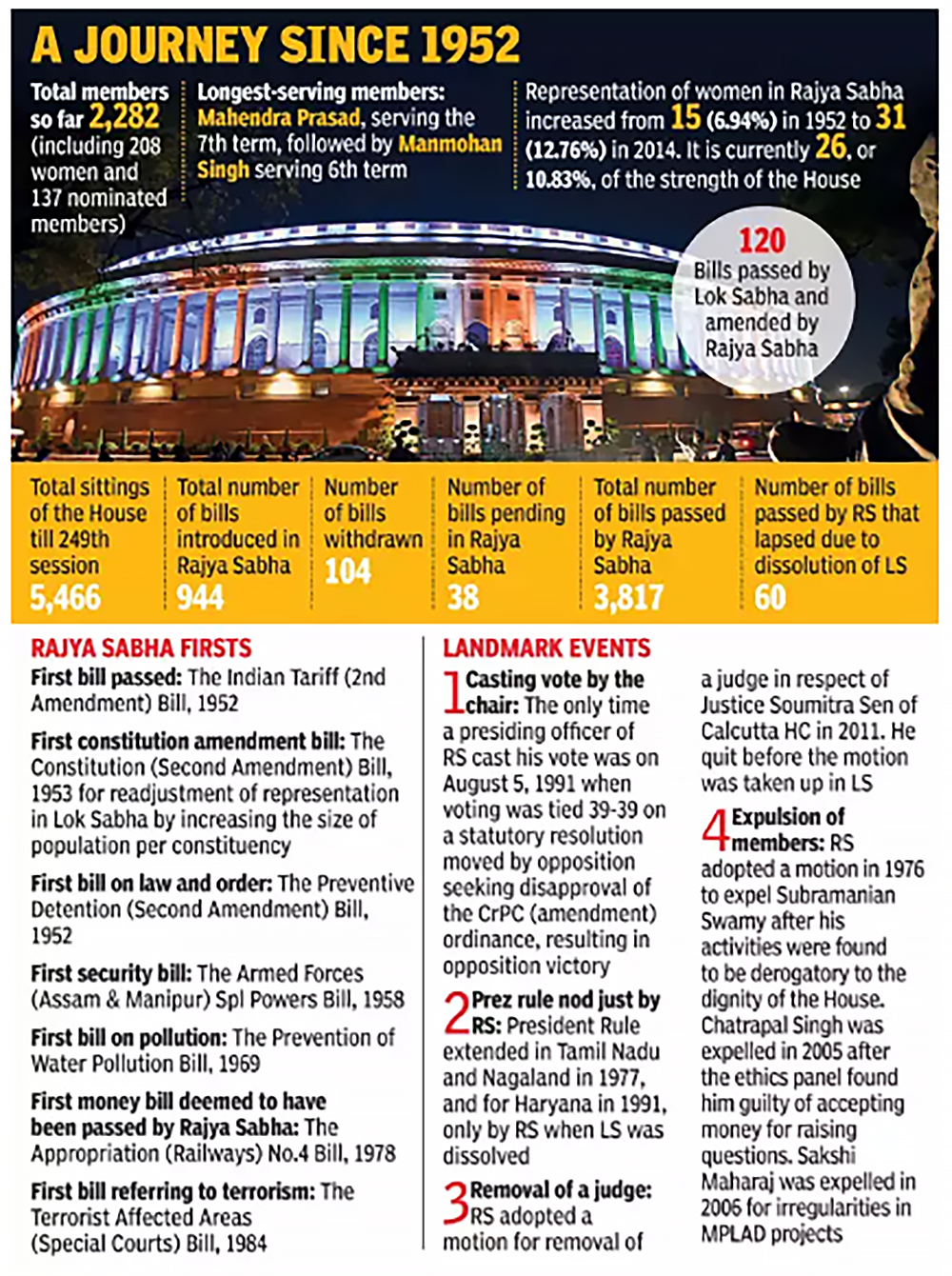Indian Polity
250th Session of Rajya Sabha
- 18 Nov 2019
- 4 min read
Why in News
The Rajya Sabha secretariat has released the first-ever analysis of its legislative work, “Rajya Sabha: The Journey since 1952” on the occasion of the 250th session of Rajya Sabha.
Key Points
- The Rajya Sabha has passed 3,817 Bills till the end of its 249th session (Monsoon Session, 2019).
- The recent monsoon session of Rajya Sabha(2019) has been reported as the most productive session (103%).
- Productivity signifies the number of hours the House actually functioned compared to the number of hours officially earmarked for it to work.
- The representation of women in Rajya Sabha increased from 15 (6.94%) in 1952 to 31 (12.76%) in 2014 but decreased to 26 (10.83%) in 2019.
Some Unique Events Related to Rajya Sabha
- Casting vote by Chairman: The first and the only time when a Presiding Officer of Rajya Sabha cast his vote was for the Code of Criminal Procedure (Amendment) Ordinance, 1991.
- The Chairman cannot vote in the first instance; he can only exercise a casting vote in the case of a tie.
- President Rule approved only by Rajya Sabha: It has happened only twice for extension of President Rule in Tamil Nadu (1977) and in Haryana (1991 ) when Lok Sabha was dissolved.
- Bills passed at the joint sittings of both the Houses of Parliament:
- The joint sitting has passed only three bills, namely
- The Dowry Prohibition Bill, 1959 passed at a joint sitting in 1961.
- The Banking Service Commission (Repeal) Bill,1978 passed at a joint sitting in 2018.
- The Prevention of Terrorism Bill, 2002 passed at a joint sitting in 2002.
- Joint sitting is extraordinary machinery provided by the Constitution to resolve a deadlock between the two Houses over the passage of a bill.
- The joint sitting has passed only three bills, namely
Rajya Sabha
- The maximum strength of the Rajya Sabha is fixed at 250, out of which, 238 are to be the representatives of the states and union territories (elected indirectly) and 12 are nominated by the president.
- The representatives of states are elected by the elected members of state legislative assemblies.
- The representatives of each union territory are indirectly elected by members of an electoral college specially constituted for the purpose
- The seats are allotted to the states in the Rajya Sabha on the basis of the population.
- The Rajya Sabha (first constituted in 1952) is a permanent body and not subject to dissolution.
- However, one-third of its members retire every second year.
- The retiring members are eligible for re-election and renomination any number of times.
- The Constitution has not fixed the term of office of members of the Rajya Sabha and left it to the Parliament.
- Accordingly, the Parliament in the Representation of the People Act (1951) provided that the term of office of a member of the Rajya Sabha shall be six years.
- Special Powers of Rajya Sabha include:
- It can authorize the Parliament to make a law on a subject enumerated in the State List (Article 249).
- It can authorize the Parliament to create new All-India Services common to both the Centre and states (Article 312).







